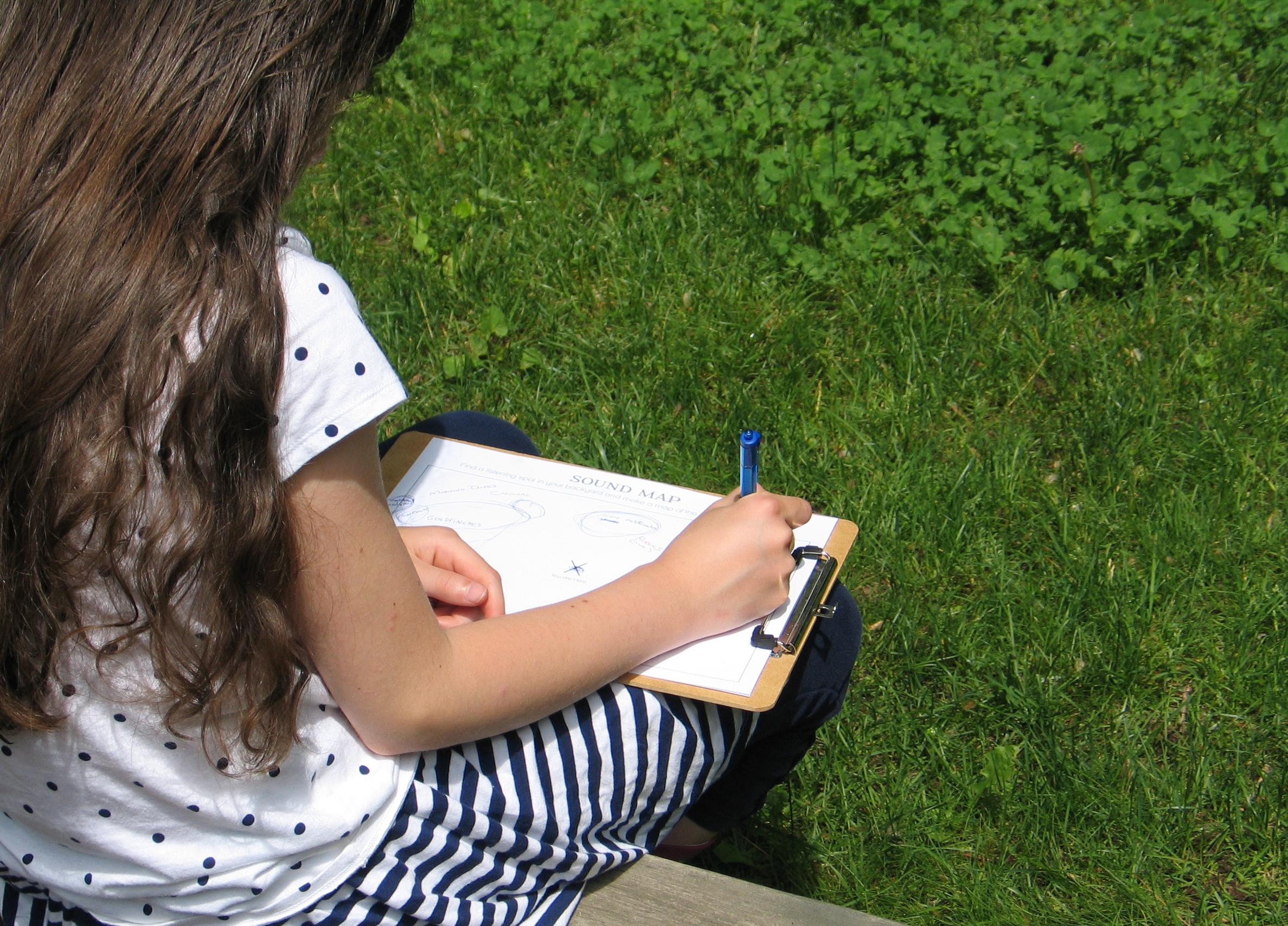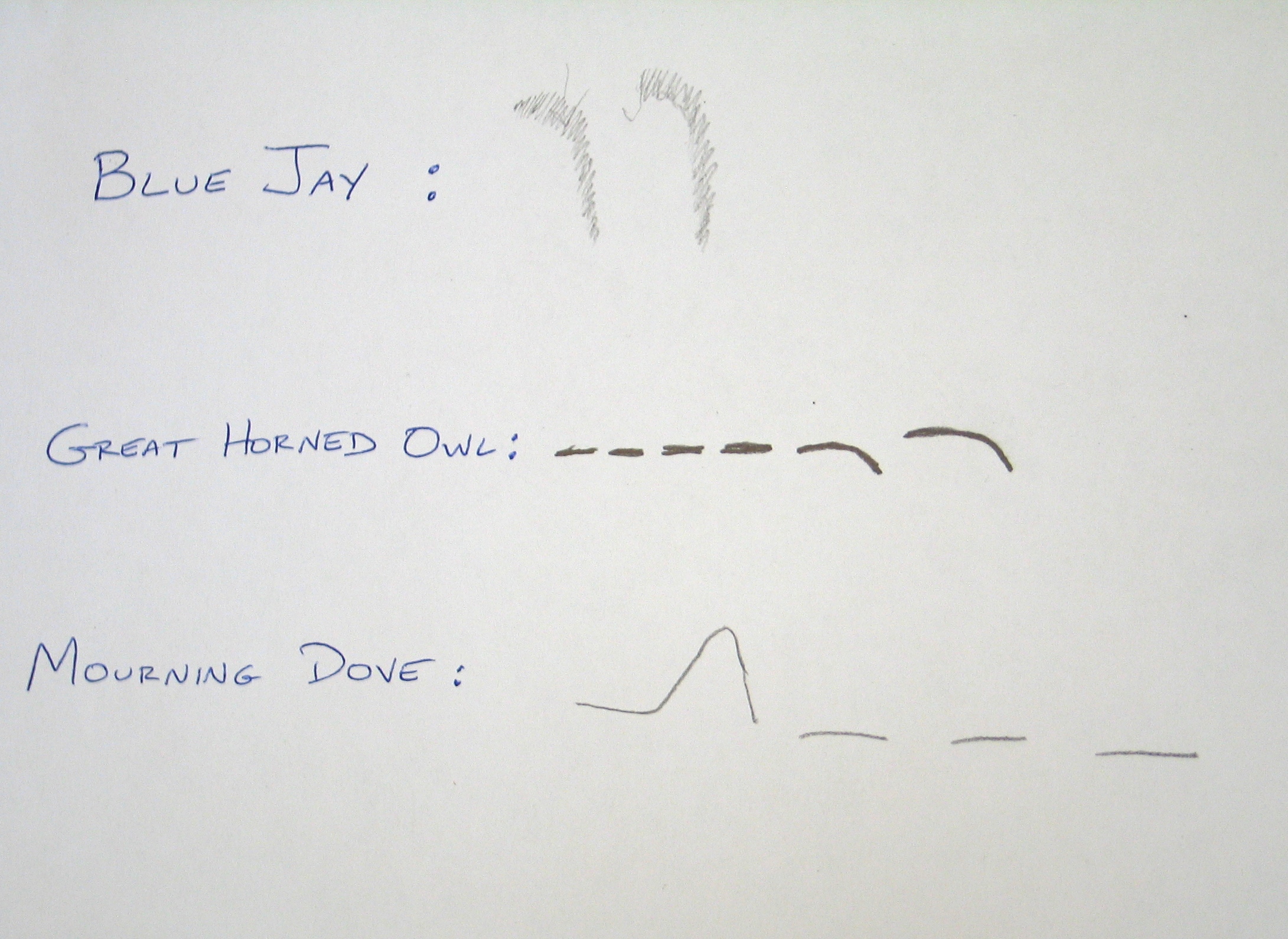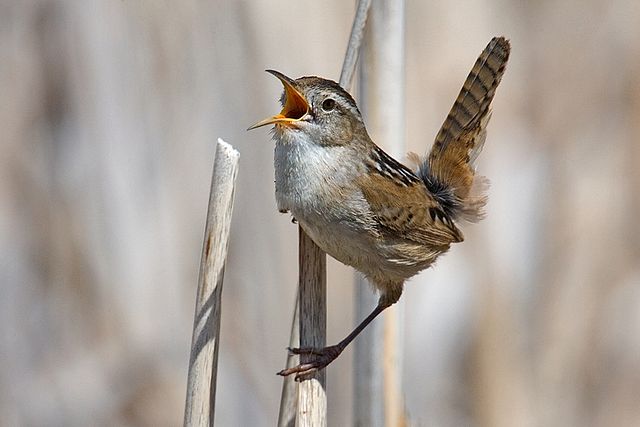Nature School Project: Identifying Bird Calls
In this Martin & Sylvia Nature School story, “All the Pretty Voices“, when Martin gets up in the morning, he finds himself thinking about voices: how much he enjoys the voices of his Goose-eye Wilderness School apprentices… and how he sometimes finds his sister’s voice to be irritating. When he arrives at Goose-eye, Eva teaches them another place where they can enjoy all the wonderful voices in nature: in birdsong.
We are joined by Monique of Green Acorns who teaches us how to identify and map bird calls.
Have you been waking up to a chorus of song birds each morning? It can be such a pleasant welcome to a new day, can’t it? With the exception of the summer that we had a flock of very loud blue jays right outside of our bedroom window, I find listening to the birds’ morning songs a delightful way to start to my day.
Birds communicate for many of reasons: locating each other, warning of danger, and marking the boundaries of their territory are just a few. The variety of their vocalizations is quite astounding. It can seem overwhelming to learn to identify a bird by its call but it doesn’t have to be. Continue reading to find out how to introduce children of any age to identifying bird calls…
Children have such a keen ear and are able to distinguish differences in pitch and tone at such a young age. They also seem to have an innate sense of rhythm. Of course, like with anything else, the more exposure they have and the more variety there is, the stronger their abilities become. You will find this to be true with learning bird calls. So, let’s get started!
Who Said That?
Play an auditory matching game with Audubon plush birds. Start with introducing two of the plush birds whose songs are quite different from each other, like a Robin and a Great Horned Owl (a melodic versus a rhythmic). Play the recorded song while the child is looking at the corresponding bird. Talk about the sounds and patterns you hear. After your child has become familiar with the calls and the bird that made each, hide them behind your back or in a bag. Play one recording at a time and ask your child to identify the bird. Feel free to add additional birds. Just introduce one at a time and stay within your child’s comfort level so that it doesn’t get too overwhelming. Now let your child hide the birds from your view and ask you to identify the bird.
Make a Sound Map
Print off this simple sound map before you begin. Head outside and find a sit spot in your yard. Sit quietly for 2-5 minutes and observe the different bird songs/calls that you hear. You can listen with your eyes closed to help you focus better on just the sounds. When you are done listening, record the approximate location that each bird call was coming from in relation to where you are sitting.If you know the name of the bird you can write that. You can also just draw a symbol such as an open bird beak or a musical note. Remember, the purpose of this activity is to train your ear. It is not a drawing exercise.

Clap, Run, Wave: Using Your Body
There are several developmental approaches for teaching music to children that uses body movements to represent rhythm and pitch (have you ever heard of Eurhythmics or the Kodaly method?). This is a great way to reinforce the concepts kinesthetically and you don’t need any special training to incorporate it into your practice of identifying bird songs. Listen to some bird sounds and decide with your child how best to represent them. For example, you might represent a mourning dove’s song by waving your arms like a conductor’s. The movements would be smooth, rise and fall in correlation to the change in pitch, and be small or large to indicate duration.A Northern Cardinal’s call could be represented by claps that match it’s pattern.Maybe your child could wiggle about or run in place at a speed that matches a Robin’s song. Get the idea? Create your own interpretation and have fun!
Disclaimer: My children thought this activity was quite silly and getting them to give it a try did not go over so well. They did enjoy watching me make my interpretive movements, however. They were open to clapping and tapping out the rhythms of various calls at least.
Drawing Sound
Spectrograms are visual representations of sound indicating duration, pitch, and intensity. Spectrograms are one tool used to help scientists study animal communication. Show your child some examples (there are some here and here) before beginning. Then listen to some bird sounds either in your yard or on a site like All About Birds or Audobon Birds. Try to choose some simple calls to begin with, such as a Great Horned Owl or a Chickadee. Talk about the sounds you hear: short versus long notes, increase or decrease in pitch, rhythms, intensity, etc. Now put pencil to paper and draw out the representations. For example, short notes could be indicated by dots, longer notes by dashes, trills by wiggly lines.Here are some examples from my children:

Cornell’s Lab of Ornithology has a great interactive game called Bird Song Hero that you should really try. Exploratorium also has a similar interactive game that is more appropriate for younger children.These are both worth checking out. They are great tools for training your ear.
Stop, Look and Listen
Take advantage of birds’ active time of day (dawn and dusk are great) to observe birds and the sounds they make. Sit quietly, listen for bird songs and calls, and look in the direction that you hear them coming from to try to catch a glimpse of the birds making the sounds. This is one of the best ways to match birds to their sounds. It does take patience and time but is well worth it.
If you are not having luck getting a good look at the birds, referring to a book like Bird Songs: 250 North American Birds in Song can be very helpful. Locate the birds found in your area and especially birds seen in your yard and play their calls. Listen for familiar songs and make note of the bird that makes it.
The more you practice, the better you’ll become at identifying bird songs and calls. Most of all… have fun!
About the authors
-

Monique Barker
Nature School ContributorMonique worked many years as an Early Intervention Specialist and an Early Childhood educator. She now spends her days educating her three children at home, days that always include shared stories and nature connections. You can see more of her family’s nature activities on her blog, Green Acorns, where she hopes to inspire children and their adults to deepen their connection with nature through playful experiences. Monique also shares engaging learning experiences at Playful Learning.



